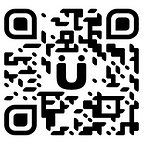PRüF, IOT, and the Blockchain Of Things
By now, IOT or the “internet of things” will be a familiar term for most people in the tech space.
In its most common form, the internet of things is merely the addition of connectivity to everyday items — light switches, doorbells, locks, cars, refrigerators, and many other household and industrial devices.
Most frequently, IOT enables connectivity to intelligent assistants like Alexa and Google. Connected devices can be controlled and monitored in the cloud, re-order supplies as they are consumed, and work together to create new synergies and efficiencies.
But aside from these household-centric use cases, where is IOT in the industrial space? What is the BOT, or blockchain of things? And where does PRüF fit into all of this?
Industrial IOT in its present form is widely known as SCADA, or Supervisory Control And Data Acquisition. SCADA is a system of computers, networked data communications, and graphical user interfaces to supervise machines and processes.
SCADA is dominated by arcane protocols such as MODBUS, delivered over wires, networks, radio links, or fiber-optic interfaces. MODBUS offers a simple (if obtuse) interface to simple devices, allowing them to be remotely queried and their data re-transmitted. Usually, this data is then published with MQTT or HTTP / JSON and eventually consumed by other IOT devices, logging systems, or centralized control interfaces such as a NODE-RED server or dedicated hardware controllers.
This system and its predecessors have worked for decades, and SCADA systems underpin the vast majority of industrial monitoring and control driving the global industrial apparatus. Although encryption and other security measures have partially mitigated the vulnerabilities inherent in these systems, even well-secured systems share a critical limitation that limits the interactivity of industrial systems across company domains and legal jurisdictions.
The limiting factor is trust. These systems all operate from the perspective of centralized trust. A centralized trust paradigm is a simple and effective solution for use within an organization, as the incentives for violating that trust are easily identified and controlled. But what about relationships between companies, where there is something to be gained by simple undetected deceptions?
Problems of trust are where blockchains, trustless systems designed to enforce consensus, can deliver value across producers, users, and brokers of energy or other commodified assets. Examples might be micro/rooftop solar producers (producers), electric cars(users), and the charger network (brokers).
Although the overall incentive alignment of these entities is good, there is a perverse incentive built into energy reporting. First, the rooftop producers are incentivized to over-over report their delivery. The cars are incentivized to under-report their consumption. And finally, the charging network is incentivized to simultaneously under-report incoming power and over-report power delivered. So, how do we trust?
The answer is to trust no one, yet everyone. The incentives stream into perfect alignment if everyone must algorithmically agree on each data point.
Establishing this trust can be accomplished with private blockchain solutions, where stakeholders cooperate in operating a private blockchain.
Accounting, recording, and exchange functions can be performed on-chain at near-zero marginal cost. Devices can either run a node on the chain or connect to it over a network link, reporting and validating their data on-chain to provide immutable accounting of their actions, verified and certified by all stakeholders.
To the basic premise of private chain accounting, PRüF delivers a turnkey solution for validating permissions, digital identity, asset tracking, and even as a payment layer for private- chain enterprise.
The lightweight PRüF protocol not only delivers industry-leading features that enable unprecedented granular control without writing custom blockchain code, but PRüF also enables the DAO governance of these systems. DAO governance at the protocol level ensures that all stakeholders can participate in governance in widely distributed or deeply fragmented systems. Distributed control further allows for real-time automated price negotiation and other adaptive protocols to help minimize inefficiencies and improve resource liquidity.
Examples of emerging industries that can gainfully leverage BOT technology include premises- owned rooftop solar, 3rd party tenant charging stations, distributed virtual electricity providers (EVNOs, on the MVNO model), and other distributed infrastructure providers. These emerging markets are anticipated to experience rapid growth as opportunities for idle resource utilization become more accessible, leading to exponential growth and a greener, more efficient world.
Deployed infrastructure can leverage availability-based routing, resource price negotiation, and other efficiency improvements using communication between devices. However, these devices are often controlled by different entities with conflicting incentives.
The emergence of virtual / distributed utility providers means that participating roles will expand to include diverse and unvetted participants.
Aligning incentives within diverse roles requires robust stakeholder consensus mechanisms, and the Blockchain-Of Things (BOT) is a proven, effective solution. PRüF brings rapid deployment and audited, upgradeable solutions to BOT networks and facilitates cross-chain payment gateways for real-time, global asset liquidity.
With on-chain DIDs and minting authorities for asset or record control, industry-leading DAO functionality, and easy integration of custom business logic, PRüF is uniquely positioned to be the leading layer2 protocol for turnkey deployment of Blockchain Of Things networks.
